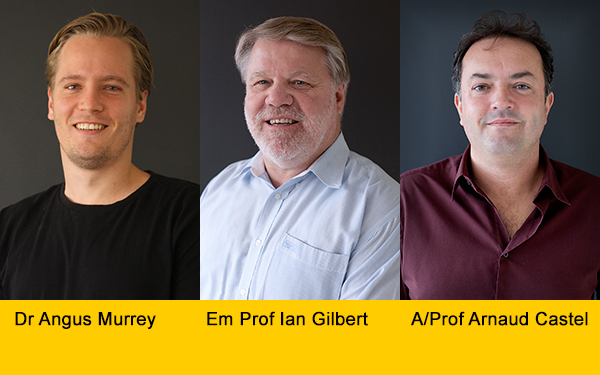CIES researchers awarded Best Journal Paper 2018
 The American Society of Civil Engineers (ASCE) Journal of Structural Engineering (JSE) – has awarded 2018 Best Journal Paper in the Materials and Structural Response category to CIES researchers Dr Angus Murray, Professor Ian Gilbert, and Associate Professor Arnaud Castel for their paper on “Spacing of Cracks in Reinforced Concrete Based on a Variable Transfer Length Model”.
The American Society of Civil Engineers (ASCE) Journal of Structural Engineering (JSE) – has awarded 2018 Best Journal Paper in the Materials and Structural Response category to CIES researchers Dr Angus Murray, Professor Ian Gilbert, and Associate Professor Arnaud Castel for their paper on “Spacing of Cracks in Reinforced Concrete Based on a Variable Transfer Length Model”.
This paper was chosen by a committee comprised of Associate Editors from about 300 papers accepted for publication in JSE last year.
The CIES paper identified a solution for the classical problem governing the relationship between the average crack spacing and the transfer length, a solution demonstrated to yield accurate estimates of average crack spacing for a wide range of RC tension and flexural members. (Full abstract below)
JSE Editor-in-Chief, Sherif El-Tawil congratulated the contributors for their excellent work. ”We are proud to have published your research,“ he said. “As an award winner, this paper will be heavily promoted by ASCE.”
The paper will be featured prominently on the American Society of Civil Engineers website for most of 2019, made freely available, and advertised during the 2019 Structures Congress in Orlando, Florida in April.
Abstract of the Paper:
A method is proposed to indirectly determine values of the transfer length in cracked RC based on the observed load-deformation responses of RC tension members and their crack configurations under increasing load. The transfer length is characterized on the basis of results of several tension stiffening studies in the literature, including recent tests by the authors. In the present study, the transfer length is revealed to be strongly load-dependent, accounting for the gradual deterioration of the tension stiffening effect with increasing load. A solution is identified for the classical problem governing the relationship between the average crack spacing and the transfer length, and it is demonstrated to yield accurate estimates of average crack spacing for a wide range of RC tension and flexural members. Based on empirical crack spacing distributions of real RC members, a statistical approach is adopted to characterize the minimum and maximum spacing of cracks.



